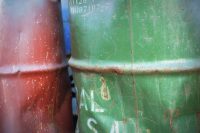EPA Inspectors Find TRI Data Errors for Publicly Owned Treatment Works
According to a rare Management Alert from the EPA’s Office of Inspector General (OIG), information reported to the Agency on chemicals released to the environment by publicly owned treatment works (POTWs) conflicted with information the OIG obtained separately from the Agency.








